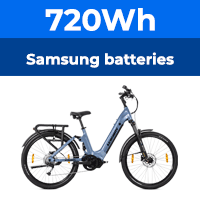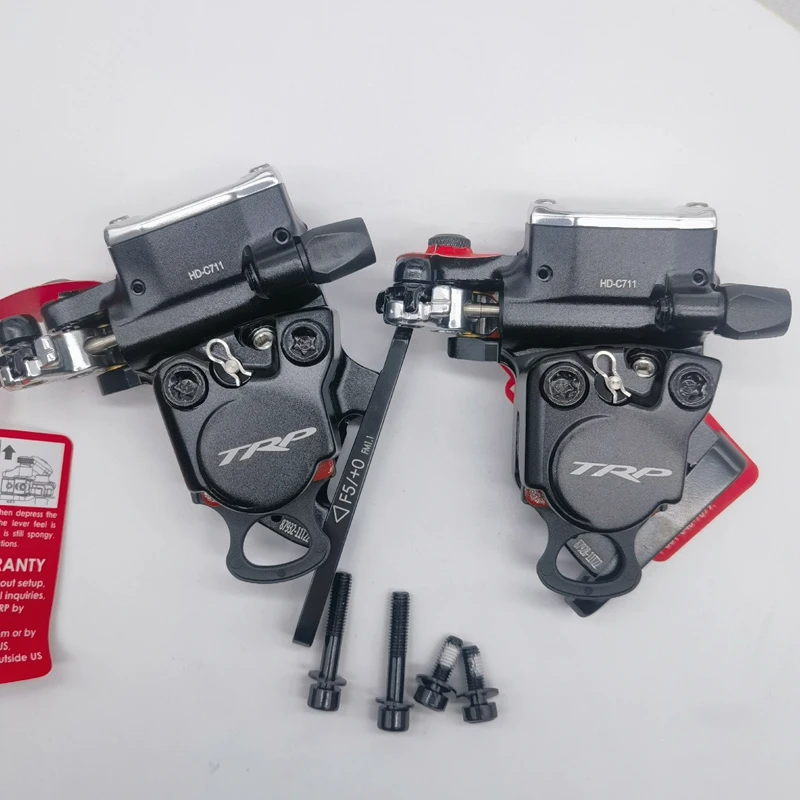I know some of us have these things, and I've heard various stories about them leaking. Today, those on my friend Mikel's bike needed attention because the brakes were no longer working like they were before. I could see that the levers on the calipers were bottoming out at the end of their travel, as if the oil had leaked out, but that's not it.
We put the bike up on the stand, removed a caliper and had a good look, then I figured it all out. The problem is that these calipers do not have a separate reservoir of oil, nor a hose full of it to adjust anything. When the pads wear, the pistons behind them have to travel further, which means a bigger volume behind them, which fills with oil from the lever actuating piston. In other words, as the pads wear, the lever will need to travel further because of the limited volume of oil in the system. Eventually. it reaches the end of its travel before fully clamping the disc. The system is fundamentally flawed because the volume of oil in the caliper needs to increase as the pads wear, but it's a closed sytem.
What that means is that you have two choices: Either you replace the pads with new ones when they're about 30% worn, or you put some more oil into the caliper. We chose the latter, which turned out to be a little more complicated than we thought, but it's pretty straight forward once you get your head around it.
I bought a cheap bleed kit and some oil from Aliexpress. This one colour A. You need the 4mm adapter:

 www.aliexpress.com
www.aliexpress.com
With the caliper removed from the bike, tilt it so that the fill screw is at the highest point to stop oil coming out and air getting in, then remove the screw. Fit the tube and 4mm adapter to the syringe and fill with oil. Screw the adapter into the caliper. Now the syringe will work the brake when you squirt in more oil. The only problem is that the spring on the pads pulls them back as soon as pressure is released, so when you detatch the adapter, the oil that you squirted in squirts back out, leaving you where you started. The solution is to wedge the pads until they're touching. I used a couple of thin allen keys behind them, then you can squirt in the oil to move the pistons forward, and everything stays in place when you unscrew the adapter. Don't forget to keep the thing upright (and the tube) so that any air comes out. I squirted in and out a few times to remove any air bubbles. Finally screw in the fill-screw.
What you have now is the pads too close together, so you can't get them over the disc. You can't prise them open because there's nowhere for the oil to go, so what you do is loosen the fill-screw a bit at a time and retighten it to let the springs push some oil out until the gap between the pads is just enough to go over the disc. Be careful not to let the oil go on the pads.
That's it. Quite a lot of messing about for what should be a simple task, but it only takes about 5 minutes from start to finish once you've done one.
The difference is immediately noticeable. The brakes bit within a very small movement of the lever. I'd say that it's much better now than when new, so should last longer this time. They feel more like conventional hydraulic brakes than they did before.
In summary, it's not the oil leaking, it's the volume inside the caliper expanding.
We put the bike up on the stand, removed a caliper and had a good look, then I figured it all out. The problem is that these calipers do not have a separate reservoir of oil, nor a hose full of it to adjust anything. When the pads wear, the pistons behind them have to travel further, which means a bigger volume behind them, which fills with oil from the lever actuating piston. In other words, as the pads wear, the lever will need to travel further because of the limited volume of oil in the system. Eventually. it reaches the end of its travel before fully clamping the disc. The system is fundamentally flawed because the volume of oil in the caliper needs to increase as the pads wear, but it's a closed sytem.
What that means is that you have two choices: Either you replace the pads with new ones when they're about 30% worn, or you put some more oil into the caliper. We chose the latter, which turned out to be a little more complicated than we thought, but it's pretty straight forward once you get your head around it.
I bought a cheap bleed kit and some oil from Aliexpress. This one colour A. You need the 4mm adapter:

High Performance Bike Brake Mineral Oil - 60ml/2oz - Ideal for Shimano and Tektro Hydraulic Brake Systems - AliExpress 18
Smarter Shopping, Better Living! Aliexpress.com
With the caliper removed from the bike, tilt it so that the fill screw is at the highest point to stop oil coming out and air getting in, then remove the screw. Fit the tube and 4mm adapter to the syringe and fill with oil. Screw the adapter into the caliper. Now the syringe will work the brake when you squirt in more oil. The only problem is that the spring on the pads pulls them back as soon as pressure is released, so when you detatch the adapter, the oil that you squirted in squirts back out, leaving you where you started. The solution is to wedge the pads until they're touching. I used a couple of thin allen keys behind them, then you can squirt in the oil to move the pistons forward, and everything stays in place when you unscrew the adapter. Don't forget to keep the thing upright (and the tube) so that any air comes out. I squirted in and out a few times to remove any air bubbles. Finally screw in the fill-screw.
What you have now is the pads too close together, so you can't get them over the disc. You can't prise them open because there's nowhere for the oil to go, so what you do is loosen the fill-screw a bit at a time and retighten it to let the springs push some oil out until the gap between the pads is just enough to go over the disc. Be careful not to let the oil go on the pads.
That's it. Quite a lot of messing about for what should be a simple task, but it only takes about 5 minutes from start to finish once you've done one.
The difference is immediately noticeable. The brakes bit within a very small movement of the lever. I'd say that it's much better now than when new, so should last longer this time. They feel more like conventional hydraulic brakes than they did before.
In summary, it's not the oil leaking, it's the volume inside the caliper expanding.




